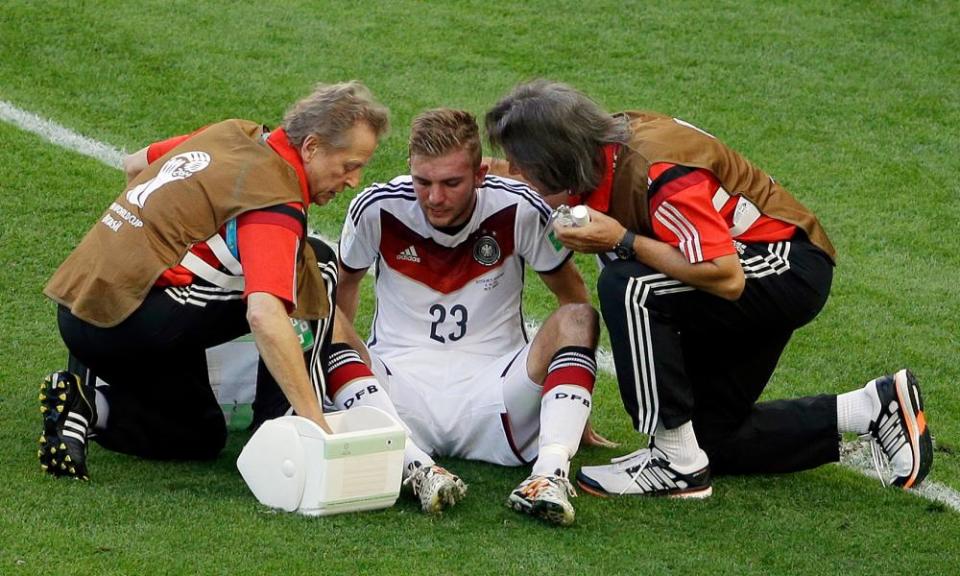Concussion protocols at 2014 World Cup failed Fifa standards, study finds

Head collisions experienced by footballers during the 2014 World Cup were not tackled according to Fifa’s own standards, research has revealed.
A team of doctors from Canada have found that after almost two-thirds of the head collision events that occurred during the tournament, the players involved did not receive an assessment on the sidelines by healthcare personnel.
In addition, the assessments that did take place were very brief – a situation the doctors say is concerning.
The research, from the department of neurosurgery at St Michael’s Hospital in Toronto, follows a number of international conferences on concussion in sport, in which consensus statements issued in 2012 and 2016 – and backed by Fifa – recommended that players who displayed any sign of concussion should be assessed at the sidelines by healthcare personnel.
“I wanted to understand what kind of assessments these athletes are getting at this elite level,” said Michael Cusimano, a neurosurgeon and co-author of the research.
Cusimano added that attitudes seen at the World Cup can trickle down to amateur games and even to the college and school level. “It speaks volumes if the leading organisation in the world cannot put the policy they have signed on to – they were a signatory to these conferences – into practice, with all the resources that a huge organisation like that has,” he said.
The issue of concussion in sport has received growing attention in recent years, from cricket to American football, with various former players of the latter among those who have raised concerns about the long-term impact of head collisions.
In the 2014 World Cup final, the Germany midfielder Christoph Kramer collapsed 14 minutes after being involved a head collision. “I don’t know anything from the first half,” he said afterwards. “How I got to the changing rooms I do not know.”
In the new study, published in the Journal of the American Medical Association, four trained reviewers examined footage from all 64 matches in the tournament. They noted all cases of head collisions, assessing whether the players involved showed any signs of concussion, such as disorientation, seizure-like movements or clutching their head. They also recorded what sort of assessment – if any – the players received and whether they subsequently returned to the field.
The results show that of the 81 head collision events noted, 67 left players with two or more signs of concussion. In 16% of these 67 cases, the affected player received no assessment, while in 63% of cases players returned to the game after an on-pitch assessment carried out by either another player, the referee or a member of the healthcare team.
In only 16% of the cases was the affected player assessed on the sideline by a health professional before being allowed to continue playing, while just three players showing two or more signs of concussion were removed from the pitch – one of whom was Kramer.
While the authors admit they cannot be sure whether the players in all cases did indeed have concussion, they note that 83% of observations noted one or more signs of such injury.
“It doesn’t matter whether they had a concussion – my point is that they should be assessed,” said Cusimano, adding that the assessments that were carried out were too brief, with the longest stoppage to play standing at just 180 seconds. “It is almost impossible to do an assessment in that short a time,” he said.
Cusimano added that due to the pressure on the teams’ medics, assessments should be conducted by independent healthcare personnel.
A Fifa spokesman said that the organisation regularly looks at the situation surrounding head injuries and reviews its protocols based on the latest studies. He added that the body introduced a new head-injury protocol following the 2014 World Cup, to be applied in all Fifa competitions.
Under the change, the referee is able to stop the game for three minutes if concussion in a player is suspected in order to give the team doctor time to assess the situation and decide whether the player is fit to return to the game.
“Protecting the health of football players is and will remain a top priority in developing the game,” the spokesman added.

 Yahoo News
Yahoo News 